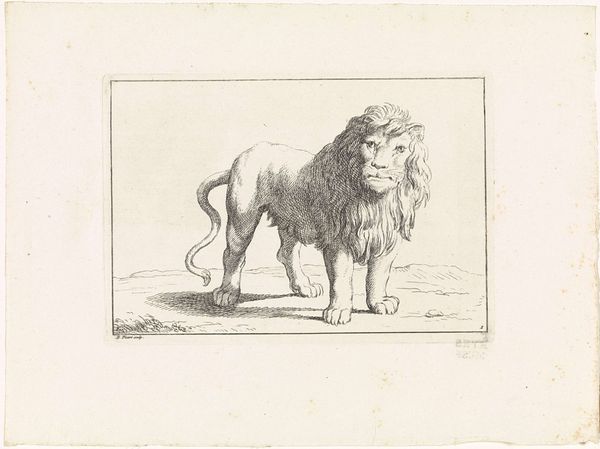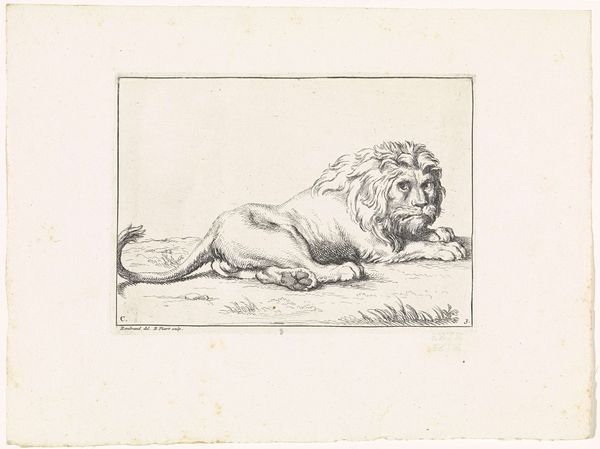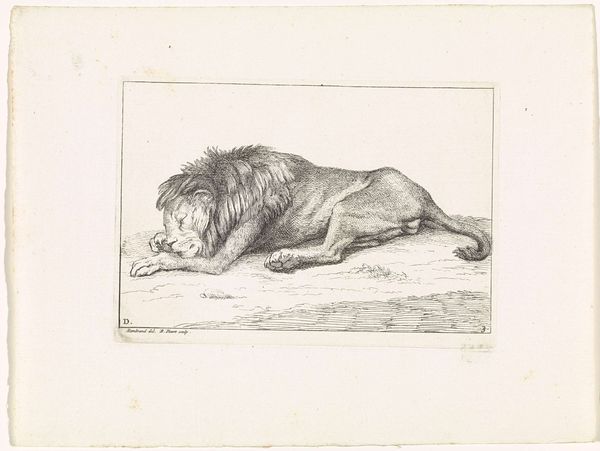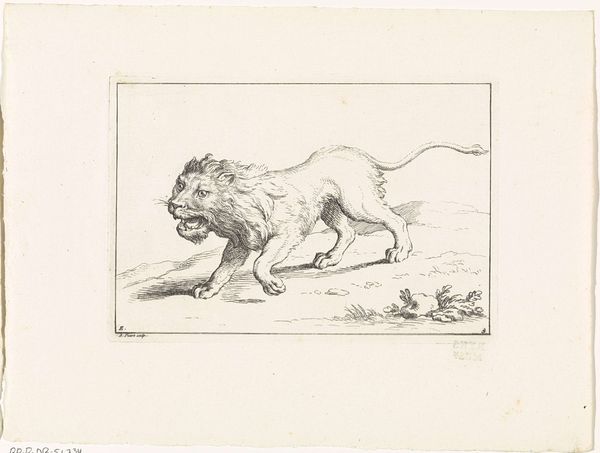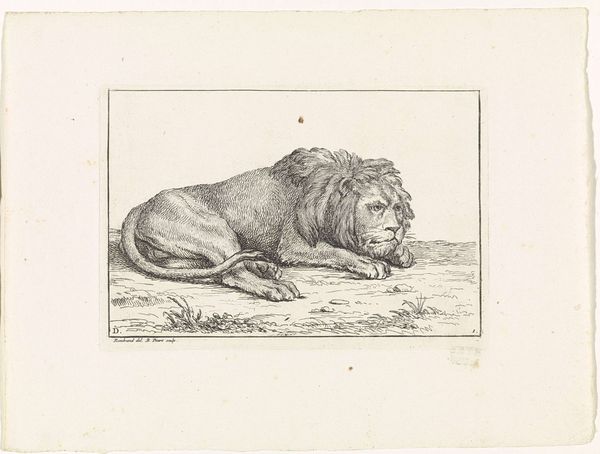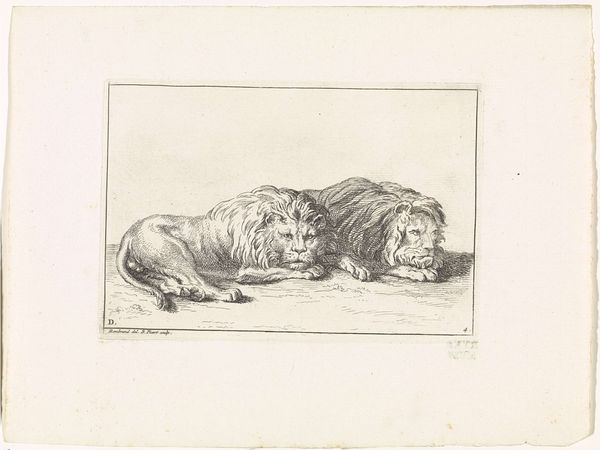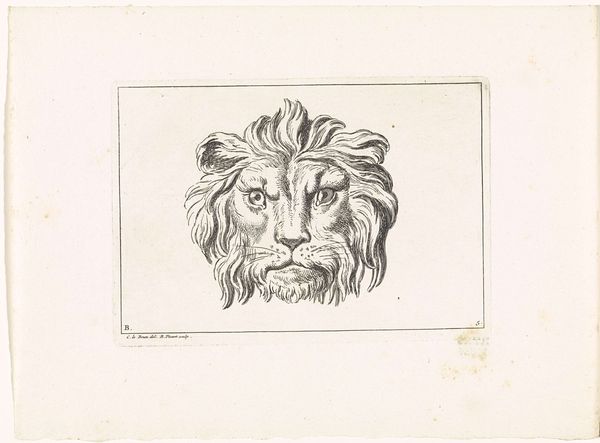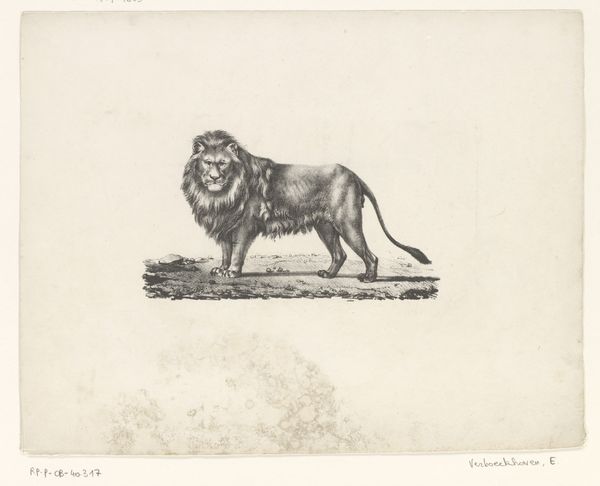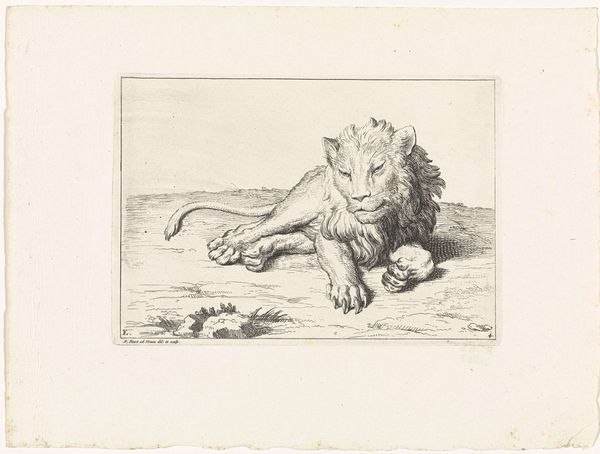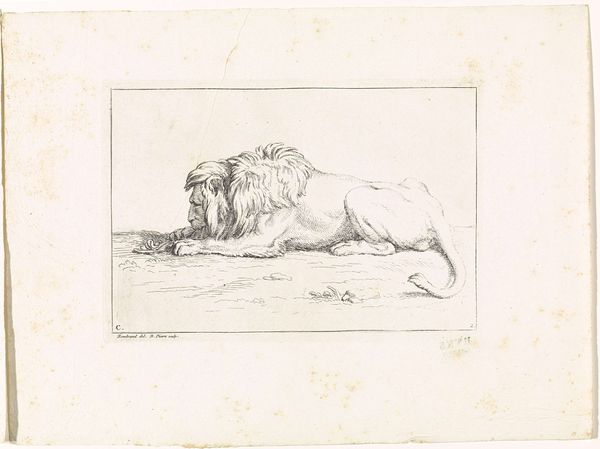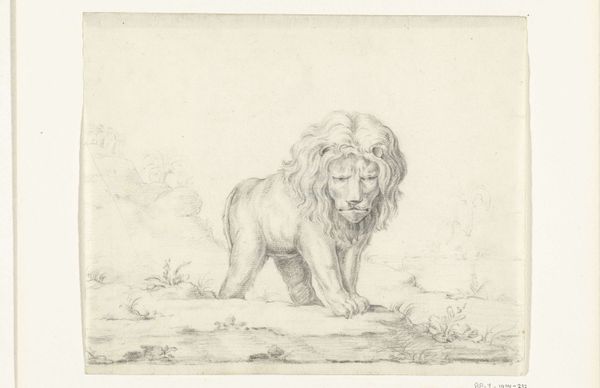
drawing, ink, engraving
#
drawing
#
imaginative character sketch
#
quirky sketch
#
baroque
#
animal
#
figuration
#
personal sketchbook
#
ink
#
idea generation sketch
#
ink drawing experimentation
#
pen-ink sketch
#
line
#
sketchbook drawing
#
storyboard and sketchbook work
#
sketchbook art
#
engraving
#
realism
#
initial sketch
Dimensions: height 123 mm, width 172 mm
Copyright: Rijks Museum: Open Domain
Curator: Let’s turn our attention to "Roaring Lion," a drawing by Bernard Picart, dating back to 1729. It resides here at the Rijksmuseum. Editor: The first impression? It's surprisingly gentle. I expected ferocity, but it reads more like...bewilderment? It reminds me of a somewhat frazzled intellectual debating a losing point. Curator: Note the linework; observe the almost frantic energy with which Picart renders the mane. There is an inherent tension there, an opposition to the creature's seemingly placid stance. Editor: The drawing is so self-contained, but also very indicative of that period's approach to natural science. When Europeans began studying exotic animals like lions, they saw power, violence, and royal qualities. But there was a bit of fear as well as this drive to categorize and possess it, if that makes sense. This engraving also mirrors something else: the fear of being 'colonized' by the animal kingdom, mirroring that very thing happening at the time. Curator: Indeed. Look at the application of ink: the controlled chaos defining its formal properties—it's almost as if the engraving struggles to contain the raw, untamed power it depicts, don't you think? Editor: And there's an inherent social critique here too, maybe not overtly stated, but present nonetheless. European aristocracy often invoked lion imagery—but they possessed none of its natural strength or dignity! Curator: You speak of the relationship between colonizers and the animal world; I can see that. And that kind of connection allows us to really delve deep. The application of that to real-world issues is critical for our understanding of not just this engraving, but all work of its period. Editor: I agree. We understand this lion through an intersectional lens: history, politics, art and natural science, social anxiety. And in understanding, we’re armed to have difficult but necessary dialogues about social structures that were being reinforced at the time that persist today. Curator: I concur. We've unveiled complex layers within this single image; considering its time, such social implications should never be understated.
Comments
No comments
Be the first to comment and join the conversation on the ultimate creative platform.
